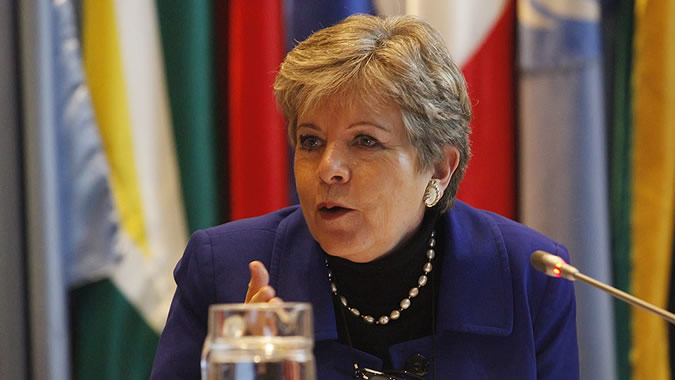ECLAC: Recovery of Growth in Latin America and the Caribbean Depends on Invigorating Public and Private Investment
Work area(s)
The UN organization presented today its 2016 annual economic report, in which it forecasts that the region will contract -0.8% this year.

Latin American and Caribbean countries will show a -0.8% contraction in their growth rate in 2016, marking a steeper decline than in 2015 (-0.5%) and with very heterogeneous behavior among countries and subregions, according to a new report released today by ECLAC.
The United Nations regional organization presented its Economic Survey of Latin America and the Caribbean 2016, in which it stresses the urgent need to mobilize investment—both public and private—to promote the region’s economic recovery and meet the challenges imposed by the 2030 Agenda for Sustainable Development.
“The capacity of countries to accelerate economic growth depends on the spaces for adopting policies that support investment. These policies should be accompanied by efforts to change the conversation between the public sector and private companies. Increasing productivity is also a key challenge for moving forward along a path of dynamic and stable growth,” Alicia Bárcena, Executive Secretary of the Economic Commission for Latin America and the Caribbean (ECLAC), said during the press conference in Santiago, Chile where the report was presented.
The survey indicates that in the external arena, the global economy will maintain low levels of growth, which will be accompanied by a slow expansion in trade, which has not managed to recover the levels seen before the international financial crisis. On top of this, the report points to deteriorated prices for the region’s commodities exports and greater international financial uncertainty and volatility, which have increased since the United Kingdom voted to leave the European Union (the so-called Brexit). This decision has also produced greater risks to the world’s future growth.
In the regional sphere, the report forecasts a -2.1% contraction for South America in 2016, mainly due to a deterioration in its terms of trade, weaker external demand and a significant deceleration in domestic demand, which reflects a sizeable fall in domestic investment.
Central America will grow 3.8% thanks to the boost coming from its improved terms of trade (resulting from lower hydrocarbons prices), the recovery of its external and domestic demand, and increased income from remittances. The Caribbean, meanwhile, will suffer a -0.3% contraction in its Gross Domestic Product (GDP).
According to ECLAC’s report, six countries are expected to show an economic contraction in 2016: Venezuela (-8.0%), Suriname (-4.0%), Brazil (-3.5%), Trinidad and Tobago (-2.5%), Ecuador (-2.5%) and Argentina (-1.5%).
On the other hand, regional growth will be led by the Dominican Republic (6.0%), Panama (5.9%), Nicaragua and Bolivia (4.5%), and Costa Rica (4.3%).
“Faced with an economic contraction, the region needs progressive structural change with a big environmental push that promotes development based on equality and sustainability, as we have proposed in our institutional document Horizons 2030: Equality at the Centre of Sustainable Development, which we presented in Mexico last May,” Alicia Bárcena said.
The economic deceleration will have an impact on the urban unemployment rate, which in 2015 was 7.4%[1] and which is expected to increase to 8.1% in 2016. Inflation, meanwhile, should behave similarly to that of last year, with greater pressures on southern economies.
In its Economic Survey 2016 ECLAC calls for resuming the path of growth and mobilizing financial flows for development financing. To achieve that, countries must change their fiscal structures to improve tax collection and progressivity, strengthen income taxes (both for individuals and companies), and fight tax evasion and avoidance, which reached the equivalent of 6.7 points of the regional GDP in 2015 at an estimated $340 billion dollars.
Additionally, it is necessary to promote renewed public-private coalitions and policies that create appropriate incentives to channel financing towards development goals. Also, financial inclusion should be strengthened as a policy of productive insertion through the creation of markets and new innovative instruments.
[1] This figure does not coincide with the data published in ECLAC’s previous reports due to methodological changes. For more details see the special text box on this issue in Chapter I of the Economic Survey 2016.
Related content
Estudio Económico de América Latina y el Caribe 2016
Presentación de la Secretaria Ejecutiva de la CEPAL, Alicia Bárcena.
Subregional headquarter(s) and office(s)
Related link(s)
Country(ies)
- Latin America and the Caribbean
Contact
Public Information Unit
- prensa@cepal.org
- (56 2) 2210 2040